Mohamed Ibnkahla9780849316579, 0-8493-1657-X
Table of contents :
Signal Processing for Mobile Communications Handbook……Page 1
Copyright……Page 3
Preface……Page 4
Editor……Page 5
Contents……Page 8
Abstract……Page 11
1.2.1.1.1 Free-Space Propagation Model……Page 12
1.2.1.2.1 Lognormal Shadowing Model……Page 13
1.2.2.1.4 Power Delay Profile,……Page 14
1.2.2.2 Types of Small-Scale Fading……Page 15
1.2.2.2.4 Slow Fading……Page 16
1.2.2.3.3 Nakagami Fading Channel……Page 17
1.2.2.4.1 Two-Ray Fading Channel Model……Page 18
1.2.2.4.3 Finite-State Markov Chain Model……Page 19
1.2.2.4.4 LooÌs Satellite Channel Model……Page 20
1.2.2.4.5.1 Matrix Channel Model……Page 21
1.2.2.4.5.2 Physical Scattering Model……Page 22
1.3.2.1 Phase Shift Keying……Page 23
1.3.2.3 Quadrature Amplitude Modulation……Page 25
1.3.2.4 Frequency Shift Keying……Page 26
1.3.2.5 Continuous-Phase FSK……Page 27
1.3.2.9 Orthogonal Frequency Division Multiplexing……Page 28
1.3.2.10 Challenges in the Next-Generation System Concerning Different Modulation Techniques……Page 29
1.4.1 Shannon’s Capacity Theorem……Page 30
1.4.2 Different Coding Schemes……Page 31
1.4.2.1.6 Implementation Complexity……Page 32
1.4.2.1.9 Interleaving……Page 33
1.4.2.2.1 Pictorial Representation of Convolutional Encoder……Page 34
1.4.2.4 Turbo Coding……Page 36
1.4.3 Coding in Next-Generation Mobile Communications: Some Research Evidence and Challenges……Page 37
1.5.1.1.2 Demerits……Page 39
1.5.1.3.2 Merits……Page 40
1.5.2 Combination of OFDM and CDMA Systems……Page 41
1.5.2.3 MC-DS CDMA Scheme……Page 42
1.5.4 Capacity of MAC Methods……Page 43
1.5.5 Challenges in the MAC Schemes……Page 44
1.6.1 Classifications of the Diversity Techniques……Page 45
1.6.2.2 Postdetection Diversity Combiners……Page 46
1.6.4 Challenges in the Diversity Area……Page 47
References……Page 48
Abstract……Page 53
2.1 Introduction……Page 54
2.2.1 Intuitive Description……Page 55
2.2.2 Mathematical Description: Deterministic Case……Page 57
2.2.3 Mathematical Description: Stochastic Case……Page 58
2.2.4 Condensed Parameters……Page 59
2.2.5 Directional Description……Page 60
2.3.1 Measured Channel Impulse Responses……Page 62
2.3.2 Deterministic Channel Computation……Page 63
2.3.2.2 High-Frequency Approximations……Page 64
2.3.3 Tapped Delay Lines……Page 66
2.3.4 Stochastic MIMO Models……Page 67
2.3.5 Geometry-Based Stochastic Channel Models……Page 68
2.4 Propagation Aspects and Parameterization……Page 69
2.4.1 Amplitude Statistics……Page 70
2.4.2 Arrival Times……Page 71
2.4.3 Average Time Dispersion……Page 72
2.4.4 Average Angular Dispersion at the BS……Page 73
2.4.5 Average Angular Dispersion at the MS……Page 74
2.4.8 Millimeter Wave Propagation……Page 75
2.5.1 The COST 207 Model……Page 76
2.5.2 The ITU-R Models……Page 77
2.5.4 The 802.15 Ultrawideband Channel Model……Page 79
2.5.5 The 3GPP-3GPP2 Model……Page 81
2.5.6 The COST 259 Model……Page 82
References……Page 83
Definitions and Symbols……Page 94
Abbreviations……Page 95
3.1 Introduction……Page 97
3.2.1.1 Tapped Delay Line Model……Page 99
3.2.1.2 Basis Expansion Models……Page 101
3.2.2 Time-Invariant Channels……Page 102
3.3 Channel Estimation……Page 104
3.3.1.1 Time-Variant Channels……Page 105
3.3.2.1.1 Stochastic Maximum Likelihood Estimation……Page 106
3.3.2.1.2 Deterministic Maximum Likelihood Estimation……Page 107
3.3.2.2.1.1 Indirect Channel Estimation……Page 108
3.3.2.2.2 SIMO Channel Estimation……Page 109
3.3.4 Hidden Pilot-Based Approaches……Page 115
3.3.4.1 Equalization……Page 117
3.4.1 Example 1……Page 118
3.4.2 Example 2……Page 119
References……Page 121
4.1 Introduction……Page 125
4.2 Statistical Propagation Models……Page 126
4.2.1.1 Single-State Statistical Models……Page 128
4.2.1.1.1.3 Rice Distribution……Page 129
4.2.1.1.1.6 Suzuki Distribution……Page 130
4.2.1.1.1.8 RLN Distribution……Page 131
4.2.1.1.1.9 Paetzold et al. Distribution……Page 132
4.2.1.1.1.11 Xie and Fang Distribution……Page 133
4.2.1.1.2 Single-State Second-Order Characterization……Page 134
4.2.1.1.2.1 Doppler Spectrum……Page 135
4.2.1.1.2.2 Level Crossing Rate and Average Fade Duration……Page 136
4.2.1.1.2.3 Fade and Non-fade Duration Statistics……Page 137
4.2.1.2.1 Lutz Model……Page 138
4.2.1.2.3 Vucetic and Du Model……Page 140
4.2.1.2.7 Wakana model……Page 141
4.2.2.1 DLR Wideband Model……Page 142
4.2.2.3 IMR Channel Model……Page 143
4.3.1 Uncoded Transmission over LMS Channels……Page 144
4.3.1.2 M-ary Orthogonal Noncoherent Detection……Page 145
4.3.2 Coded Transmission over LMS Channels……Page 146
4.3.2.1 Pseudo-coherent BPSK Detection……Page 147
4.3.2.2 Non-coherent M-ary Detection……Page 149
4.3.2.3 Convolutional Code Performance Analysis……Page 150
4.3.2.4 Turbo Code Performance Analysis……Page 154
4.4 Conclusions……Page 155
References……Page 156
Abstract……Page 160
5.1.1 Importance of Velocity Estimation……Page 161
5.1.2 Existing Velocity Estimators……Page 163
5.2.1 Received Signal Model……Page 164
5.2.2 Multipath Component Model……Page 165
5.2.4 Statistics of the Multipath Fading……Page 166
Example 5.2 Rate of Maxima Method……Page 168
Example 5.4 Covariance-Based Method……Page 169
Example 5.1 LCR Estimator……Page 170
5.4 Performance Analysis of Velocity Estimators……Page 171
5.4.2.1 Derivation of the Normalized Bias……Page 172
5.4.2.2 Performance in the Presence of AWGN and Isotropic Scattering……Page 173
5.4.2.3 Performance in the Presence of Nonisotropic Scattering and in the Absence of AWGN……Page 174
5.5.1 Simulations of the Received Signal……Page 176
5.5.2 Simulation Results……Page 177
5.6.1 Existing Methods……Page 180
5.6.2 Envelope-Based Estimators……Page 181
5.7.1 Handover Decision Algorithms……Page 184
5.7.2 Effect of an Error in Velocity Estimation on the System’s Quality of Service……Page 185
Acknowledgments……Page 187
Appendix B: Effect of the Scattering Distribution on the ZCR Method……Page 188
Appendix C: SNR Improvement in the IF Estimator……Page 189
References……Page 190
Abstract……Page 194
6.1 Introduction……Page 195
6.2.1 Model for a Wireless Link……Page 197
6.2.2 Adaptation in Response to Path Loss/Shadowing……Page 198
6.2.3 Analytic Model for Fine-Scale Adaptation……Page 199
6.3.1 Information Theoretic Bounds……Page 201
6.3.2 Design for Uncoded Systems……Page 202
6.3.2.1 Design Rules……Page 203
6.3.2.2 Numerical Results……Page 204
6.3.3.2 Coding Structures with Moderate Prediction Error Statistics……Page 205
6.3.4.2 Performance Results……Page 206
6.4.1.1 MIMO Single-User Systems……Page 207
6.4.2 Adaptive Coded Modulation for MIMO Systems……Page 208
References……Page 209
Abstract……Page 213
7.1 Introduction……Page 214
7.2 System Model……Page 215
7.3 Craig’s Method……Page 216
7.4.1.1 The Structure……Page 217
7.4.1.2 Probability of Error Analysis……Page 218
7.4.2.2 Probability of Error Analysis……Page 219
7.4.3 The (5,11) Constellation Format……Page 220
7.4.4 The (6,10) Constellation Format……Page 221
7.4.5.1 The Structure……Page 222
7.4.5.2 Probability of Error Analysis……Page 223
7.4.6 The Effect of Nonlinearity and the Application of a Predistortion Technique……Page 224
7.4.7 Total Degradation……Page 226
7.4.8 Results and Discussions……Page 227
7.5.1 The (4,11,17) Constellation Format……Page 232
7.5.2 The (5,11,16) Constellation Format……Page 234
7.5.3.1 The Structure……Page 235
7.5.3.2 Probability of Error Analysis……Page 236
7.5.5 Results and Discussions……Page 240
Appendix TWT Based on the Saleh Model……Page 242
References……Page 243
8.1 Introduction……Page 244
8.2 Basics of OFDM……Page 245
8.2.1 OFDM Modulation……Page 246
8.2.2 Demodulation……Page 247
8.3 Effect of CFO on System Performance……Page 249
8.4 Carrier Frequency Offset Estimation……Page 250
8.5.1 Nonlinear Least Squares Method……Page 251
8.5.2.1 Approximate NLS Estimator……Page 252
8.6 Null-Subcarrier-Based CFO Estimation……Page 253
8.6.1 Deterministic Maximum Likelihood Estimation……Page 254
8.6.2.2 Virtual Subcarriers Present……Page 255
8.7 Identifiability……Page 256
8.8.1 The Conditional CRB……Page 258
8.8.3 Optimal Choice of Null-Subcarriers……Page 259
8.9 Simulation Results……Page 260
Appendix: Conditional CRB……Page 262
References……Page 263
Abstract……Page 266
9.1 Introduction……Page 267
9.2.1 Orthogonality Conditions……Page 269
9.2.2 Efficient Implementation……Page 270
9.2.3 Example of Critically-Sampled Filter Bank……Page 273
9.3 Discrete Multitone Modulation……Page 274
9.4 O-QAM OFDM Modulation……Page 276
9.5 Discrete Wavelet Multitone Modulation……Page 281
9.6 Filtered Multitone Modulation……Page 282
9.6.1 Filter-bank Design……Page 286
9.6.2 Per-Subchannel Adaptive Equalization and Precoding……Page 289
References……Page 292
Ch10 Spread-Spectrum Techniques for Mobile Communications……Page 295
10.1.2 2G and 3G Cellular Systems……Page 296
10.1.3 DSP Components for Wireless Communications……Page 297
10.2.1 Narrowband……Page 298
10.2.4 Direct-Sequence Spread Spectrum……Page 299
10.2.8 DS/SS Bandwidth Occupancy……Page 300
10.2.12 Processing Gain……Page 301
10.2.14 Basic Architecture of a DS/SS Modem……Page 302
10.3.1 Frequency-, Time-, and Code-Division Multiplexing……Page 304
10.3.3 Multiple Access Interference……Page 306
10.3.4 Capacity of a CDMA System……Page 307
10.4 A Review of 2G and 3G Standards for CDMA Mobile Communications……Page 308
10.4.2 UMTS/UTRA……Page 309
10.4.3 cdma2000……Page 311
10.5.2 Code Synchronization……Page 312
10.5.3 Carrier Frequency and Phase Synchronization……Page 314
10.6.1 IF vs. Baseband Sampling……Page 315
10.6.3 Rake Receiver……Page 316
10.7.1 Multiuser Detection in the UL……Page 318
10.7.2 The Decorrelating and MMSE Detectors……Page 320
10.8.1 The Challenge to Mobile Spread-Spectrum Communications……Page 321
10.8.2 4G Wireless Communications Systems……Page 322
References……Page 323
Abstract……Page 326
11.2.1 The Fading Channel Model……Page 327
11.2.2 Transmitted Signal Model……Page 329
11.2.3 Continuous-Time Received Signal Model……Page 330
11.3 Multiuser Detection with Known CSI……Page 331
11.3.1 Conventional Single-User Detection……Page 332
11.3.2 Optimum Multiuser Detection……Page 333
11.3.3.1 The Decorrelating Detector……Page 335
11.3.3.2 Remarks……Page 337
11.3.3.3 The MMSE Detector……Page 338
11.3.3.4 Remarks on the MMSE Detector……Page 339
11.3.4 Approximate MMSE Detection: Linear Serial Interference Cancellation……Page 340
11.3.5 Constrained ML Detection: Nonlinear Serial Interference Cancellation……Page 341
11.3.6.1 Analysis……Page 342
11.3.7 Some Numerical Results……Page 347
11.3.8 Sliding-Window One-Shot Multiuser Receivers……Page 349
11.4.1 Signal Representation in Unknown CSI……Page 350
11.4.3 Channel Estimation Based on the Least Squares Criterion……Page 353
11.4.4 Trained Adaptive Code-Aided Symbol Detection……Page 355
11.4.5 Code-Aided Joint Blind Multiuser Detection and Equalization……Page 358
11.4.6 Subspace-Based Blind MMSE Detection……Page 359
11.4.8 Two-Stage Blind Detection……Page 360
11.4.9 Performance Results……Page 361
References……Page 363
12.1 Introduction……Page 365
12.2.1 Basic Assumptions……Page 366
12.2.3 Fading Statistics……Page 367
12.3.1 MIMO-OFDM……Page 368
12.3.3 Impact of Propagation Parameters on Capacity……Page 370
12.3.3.3 Ergodic Capacity in the SISO and MIMO Cases……Page 371
12.4.1 Space-Frequency Coding……Page 373
12.4.3.1 Rayleigh Fading……Page 375
12.4.3.1.2 Transmit Correlation Only……Page 376
12.4.3.2 Ricean Fading……Page 377
12.5.1.1 Impact of Cluster Angle Spread……Page 378
12.5.1.2 Impact of Total Angle Spread……Page 379
12.5.2.2 Simulation Example 2……Page 380
12.5.2.4 Simulation Example 4……Page 382
12.5.2.4.2 Delay Diversity Combined with Convolutional Code……Page 384
References……Page 385
13.1 Introduction……Page 387
13.2 Broadband Wireless Channel Model……Page 389
13.3.2 Diversity Order……Page 391
13.3.3 Design Criteria for Space-Time Codes over Flat-Fading Channels……Page 392
13.4.1.1 Spatial Multiplexing (BLAST)……Page 393
13.4.1.2 Transmit Diversity Techniques……Page 394
13.4.1.3 Space-Time Coding……Page 395
13.4.1.3.1 Space-Time Trellis Codes……Page 396
13.4.1.3.2 Alamouti-Type Space-Time Block Codes……Page 397
13.4.1.4 Diversity vs. Throughput Trade-Off……Page 398
13.4.2 Receiver Techniques……Page 399
13.4.2.1.1 Channel Estimation for Quasi-Static Channels……Page 400
13.4.2.1.3 Joint Equalization/Decoding of Space-Time Trellis Codes……Page 401
13.4.2.1.4 Joint Equalization/Decoding of Space-Time Block Codes……Page 402
13.4.2.1.6 Joint Equalization and Interference Cancellation……Page 404
13.4.2.1.7 Adaptive Techniques……Page 406
13.4.2.2 Noncoherent Techniques……Page 407
13.5 Summary and Future Challenges……Page 409
References……Page 410
14.1 Introduction……Page 414
14.1.1 System Model……Page 415
14.2 Optimum Precoding……Page 416
14.2.1 Jointly Optimum Design and Performance Bounds……Page 417
14.2.1.1 MMSE Criterion under Transmit Power and Maximum Eigenvalue Constraint……Page 418
14.2.1.2 Maximum λmin(SNR(F, G)) under Power and Maximum Eigenvalue Constraints……Page 419
14.2.1.3 Equivalent Decomposition into Independent Subchannels……Page 420
14.2.1.4 Performance Measures……Page 421
14.3.1 Differential Forms and Random Matrix Techniques……Page 423
14.3.2 The Statistics of the Capacity……Page 427
14.4 Channel Estimation for MIMO Systems Using Precoding Techniques……Page 432
14.4.1 Channel Estimation Algorithm……Page 433
14.4.2 Cramer-Rao Lower Bound……Page 435
14.4.3 Numerical Results……Page 436
References……Page 437
Abstract……Page 440
15.1 Introduction……Page 441
15.2.2.1 Rician Fading……Page 442
15.2.2.2 I.i.d. Rician Fading and i.i.d. Rayleigh Fading Channels……Page 443
15.2.2.3 Correlated Rayleigh Fading Channels……Page 444
15.2.2.4 Capacity CCDF……Page 449
15.2.3.1 System Models and Problem Statement……Page 451
15.2.3.2 MIMO MRC Systems Outage Probability……Page 452
15.2.4.1 Water-Filling Capacity……Page 453
15.2.4.2 Beam-Forming Performance……Page 455
15.3.1 Problem Statement……Page 458
15.3.2 Capacity CCDF of MIMO Optimum Combining Scheme with Perfect CSI at Transmitter……Page 459
15.3.2.1 Outage Probability……Page 460
15.3.3.1 Problem Statement……Page 463
15.3.3.2 Capacity MGF……Page 464
15.3.4 Rician/Rayleigh Fading Scenarios in an Interference-Limited Environment……Page 467
Appendix A: Some Integral Identities……Page 469
References……Page 470
16.1 Introduction……Page 472
16.2 Wireless Channel Model……Page 473
16.2.2 TV Channels……Page 475
16.3 System Model……Page 477
16.4 Block Equalization……Page 478
16.4.1 Block Linear Equalization……Page 479
16.4.2 Block Decision Feedback Equalization……Page 480
16.5.1 TIV Channels……Page 481
16.5.2 TV Channels……Page 483
16.5.3 Equalizer Design……Page 484
16.6 Serial Decision Feedback Equalization……Page 485
16.6.2 TV Channels……Page 486
16.6.3 Equalizer Design……Page 487
16.7 Frequency-Domain Equalization for TIV Channels……Page 488
16.7.2 FD Decision Feedback Equalization……Page 489
16.8.2 Decision Feedback Equalizers……Page 492
16.9.1 Design Complexity……Page 493
16.10 Channel Estimation and Direct Equalizer Design……Page 494
16.11.1 TIV Channels……Page 495
16.11.2 TV Channels……Page 497
Acknowledgments……Page 498
References……Page 499
Abstract……Page 502
17.1 Introduction……Page 503
17.2.1 System Model……Page 504
17.3 Dual-Branch Switch and Stay Combining……Page 505
17.3.1 Dual-Branch SSC Schemes……Page 506
17.3.2 Markov Chain-Based Analysis……Page 507
17.3.3 Statistics of Overall Combiner Output……Page 509
17.3.4 Application to Performance Analysis and Comparisons……Page 511
17.4.1 L-Branch SSC……Page 515
17.4.2 L-Branch SEC……Page 516
17.5.1 Mode of Operation of GSEC……Page 521
17.5.2 MGF of Combiner Output……Page 522
17.5.3 Application to Performance Analysis……Page 524
17.5.4 Complexity Savings over GSC……Page 527
References……Page 529
18.1 Introduction……Page 531
18.2.1 General Framework……Page 532
18.2.2 Simulation Framework……Page 533
18.3.1 Block Linear Equalizers……Page 534
18.3.2 Block Decision-Feedback Equalizers……Page 535
18.3.2.1 Simulation Results……Page 537
18.4.1.2 Generalized Viterbi Algorithm……Page 538
18.4.1.3 List-Type MAP Algorithm……Page 539
18.4.2 Generalization to the MIMO Case……Page 540
18.4.3 Simulation Results……Page 541
18.5.1 Whitened Matched Filter……Page 542
18.5.3 WMF Implementation Using Linear Prediction……Page 543
18.5.4 Energy Concentration……Page 544
18.5.5 Simulation Results……Page 546
18.6.1 Complexity Comparison……Page 547
18.6.2 Performance Comparison……Page 548
18.7 Conclusion……Page 549
References……Page 550
19.1 Introduction……Page 552
19.2 Identification of Memoryless Nonlinear Amplifiers……Page 555
19.2.1 Natural Gradient Learning……Page 556
19.2.2 Influence of the HPA Modeling Error on the Symbol-Error-Rate Performance……Page 558
19.2.3 Application to Adaptive Predistortion……Page 561
19.3.1 Neural Network Channel Identification……Page 566
19.3.2 Learning Algorithm……Page 567
19.3.4 Simulation Examples……Page 568
19.4.1 Neural Network Structure……Page 572
19.4.3 NG Algorithm……Page 574
19.5 Conclusion……Page 575
References……Page 576
Appendix……Page 578
Abstract……Page 580
20.2.1 Some Preliminary Notions……Page 581
20.2.2.1 Differential Coding……Page 582
20.2.2.3 Noise Masking……Page 583
20.2.3.3 Hybrid Coders……Page 584
20.2.3.4.1 Bit Rate……Page 585
20.3.1 An Overview……Page 586
20.3.2.3 Throughput……Page 587
20.3.4 Standard Speech Coders for VoIP……Page 588
20.3.5 Packet loss Recovery Techniques……Page 589
20.4.1 Wireless Voice Communications Systems……Page 590
20.4.2.5 Unequal Error Protection (UEP)……Page 591
20.4.3.1 European GSM and UMTS Standards……Page 592
20.4.4.1 Joint Channel-Source Coding……Page 593
20.5 Voice over IP over Wireless……Page 594
20.6.2 Technologies for Voice-Enabled Interfaces……Page 595
20.6.3.1 Local or Terminal-Based Speech Recognition……Page 596
20.6.3.3 Distributed Speech Recognition……Page 597
20.6.5 ASR over Wireless……Page 598
20.6.5.3 Transmission Errors and Lost Frames……Page 599
List of Acronyms and Abbreviations……Page 600
References……Page 602
21.1 Introduction……Page 605
21.1.2 Location-Based Services (LBS)……Page 606
21.2 Geolocation Methods……Page 607
21.3.1 Geometric Solutions……Page 609
21.3.2 Least Squares Estimation……Page 611
21.3.4 Hybrid Location Methods……Page 613
21.3.5 Performance……Page 614
21.4.1 AOA Estimation……Page 616
21.4.3 Range Difference Estimation……Page 617
21.5.1 Multipath Propagation……Page 618
21.5.3 Non-Line-of-Sight Propagation……Page 619
21.6.1 3G Location Solutions……Page 621
21.7 Summary……Page 622
References……Page 623
22.1 Introduction……Page 628
22.2 GPS Signal Model……Page 632
22.3.1 Broadband Interference Suppression Using Space-Time Array……Page 633
22.3.1.2 MMSE……Page 634
22.3.1.4 Signal Distortion Introduced by Processor……Page 635
22.3.2 Narrowband FM Interference Suppression Using Time-Frequency Method……Page 636
22.3.3 A Self-Coherence Antijamming GPS Receiver……Page 640
22.4.1 Bias Due to Signal Multipath……Page 646
22.4.1.1 Early-Late Discrimination Functions……Page 647
22.4.1.2 Time-Delay Estimation……Page 648
22.4.3 Time-Delay and Carrier-Phase Estimation Using Antenna Array……Page 649
References……Page 651
23.1 Introduction……Page 654
23.2.1 The Target SIR Formulation of the Power Control Problem……Page 656
23.2.1.1 Example of the Simple Two-Link Network……Page 657
23.2.1.2 The Optimal Power Vector P……Page 659
23.2.2 Autonomous Distributed Power Control……Page 660
23.2.3 DPC with Active Link Protection……Page 661
23.2.4 Admission Control under DPC/ALP……Page 663
23.2.4.2 Forced Dropout……Page 666
23.2.5 Noninvasive Channel Probing and Selection……Page 667
23.3.1 Power-Controlled Multiple Access: The Basic Model……Page 668
23.3.2 Optimally Emptying the Transmitter Buffer……Page 669
23.3.3 The Case of Per-Slot-Independent Interference……Page 670
23.3.4 Structural Properties: Backlog Pressure and Phased Back-Off……Page 671
23.3.5 Design of PCMA Algorithms: Responsive Interference……Page 672
References……Page 673
24.1 Introduction……Page 675
24.2.1 The Model……Page 676
24.2.3 The Training-Based Zero-Forcing Receiver……Page 678
24.2.4 The Semiblind Least Squares Smoothing Receiver……Page 679
24.2.5 Further Remarks……Page 681
24.3.1 Channel Reception Matrix……Page 682
24.3.2 Resolvability……Page 683
24.3.4 Further Remarks……Page 684
24.4.2 Network Performance Comparison……Page 685
24.4.3 Further Remarks……Page 686
24.5.2 The Multiqueue Service Room Protocol……Page 687
24.5.3 The Dynamic Queue Protocol……Page 688
24.5.4 Further Remarks……Page 689
24.6 Approach High Performance from Both Physical and MAC Layers……Page 690
References……Page 691
Abstract……Page 693
25.1 Introduction……Page 694
25.2.2.1 Finding Hidden Information Using Time-Frequency Representations……Page 695
25.2.2.2 What Is a Time-Frequency Representation?……Page 696
25.2.2.2.2 Instantaneous Frequency and Group Delay……Page 698
25.2.3.1 Time-Varying Spectrum and the Wigner-Ville Distribution……Page 699
25.2.3.2 Time-Varying Spectrum Estimates and Quadratic TFDs……Page 700
25.2.3.3 Time, Lag, Frequency, and Doppler Domains and the Ambiguity Function……Page 701
25.2.3.4 Quadratic TFDs, Multicomponent Signals, Cross-Terms Reduction, and Criteria for the Design of Quadratic TFDs……Page 703
25.2.3.4.2 Comparison of Quadratic TFDs……Page 704
25.3.1 Channel Modeling and Identification……Page 705
25.3.1.1 Wireless Communication LTV Channel Model……Page 706
25.3.1.2 Estimation of LTV channels……Page 708
25.3.1.3 Estimation of Scattering Function……Page 709
25.3.2.1 TV-NBI Suppression in DS-CDMA……Page 710
25.3.2.2 Signal Modulation Design for ISI Mitigation……Page 711
25.3.2.3 Multiple-Access Interference in MC-CDMA……Page 713
25.4 Time-Frequency Array Signal Processing……Page 714
25.4.1 The Spatial Time-Frequency Distributions……Page 715
25.4.1.2 Structure under Unitary Model……Page 716
25.4.3 Advantages of STFDs over Covariance Matrix……Page 717
25.4.4 Selection of Autoterms and Cross-Terms in the Time-Frequency Domain……Page 718
25.4.5 Time-Frequency Direction-of-Arrival Estimation……Page 719
25.4.6 Time-Frequency Source Separation……Page 720
25.4.6.1 Separation of Instantaneous Mixture……Page 721
25.4.6.3 Separation of Convolutive Mixtures……Page 722
25.4.6.4 STFD-Based Separation……Page 723
25.5.2 Signaling Using Chirp Modulation……Page 724
25.5.3 Detection of FM Signals in Rayleigh Fading……Page 725
25.5.4 Mobile Velocity/Doppler Estimation Using Time-Frequency Processing……Page 726
References……Page 727
Abstract……Page 734
26.1 Introduction……Page 735
26.2.1.1 Metropolis-Hastings Algorithm……Page 736
26.2.1.3 Other Techniques……Page 737
26.2.2.1 MCMC Detectors in AWGN Channels……Page 738
26.2.2.2 MCMC Equalizers in ISI Channels……Page 740
26.2.2.3 MCMC Multiuser Detector in CDMA Channels……Page 742
26.3.1.1 Sequential Importance Sampling……Page 744
26.3.1.2 SMC for Dynamic Systems……Page 746
26.3.1.3 Mixture Kalman Filter……Page 747
26.3.2 Resampling Procedures……Page 748
26.3.3.1 SMC Receiver in Flat-Fading Channels……Page 750
26.3.3.2 SMC Receiver in MIMO ISI Channels……Page 752
References……Page 756
27.1.1 Nonlinear Dynamic Systems……Page 759
27.1.2.1 Probability Density Functions……Page 761
27.1.2.2 Autocovariance and Autocorrelation Function……Page 762
27.1.3.2 Bit Stream Generators……Page 765
27.1.4 Properties of Chaotic Signals……Page 766
27.2 Communication: Requirements and Resources……Page 767
27.4 Communication Using Broadband Chaotic Carriers……Page 768
27.4.1.1.1 Chaotic Masking……Page 769
27.4.1.1.3 Chaotic On-Off Keying……Page 770
27.4.1.1.5 Analysis of Schemes with Static Encoding/Modulation……Page 771
27.4.1.2.2 Encoding Messages into the Symbolic Dynamics of Chaos Generators……Page 772
27.4.2.1.1 Reference Generation by Drive Response Synchronization……Page 773
27.4.2.1.3 Demodulation Using Reference Signals: Application Examples……Page 774
27.4.2.3 Inverse System Principles……Page 776
27.5 Chaos for Spreading Code Generation……Page 777
27.6.1.1 The Analysis Problem……Page 778
27.6.1.2.1 Discrete-Time Baseband Modeling……Page 779
27.6.1.2.2 Statistical Analysis of Nonlinear Discrete-Time Baseband Models……Page 780
27.6.1.3.2 Baseband Signal Models……Page 781
27.6.1.3.4 Results of the Statistical Analysis: Exact Solutions……Page 782
27.6.2 Chaos Communication Methods in Comparison to Classical Solutions……Page 783
References……Page 784
Abstract……Page 787
28.1 Introduction……Page 788
28.2 Overview of Adaptation Schemes……Page 789
28.2.1 Link and Transmitter Adaptation……Page 790
28.2.3 Receiver Adaptation……Page 791
28.3.1.1 Time Selectivity Measure: Doppler Spread……Page 792
28.3.1.2 Frequency Selectivity Measure: Delay Spread……Page 794
28.3.1.3 Spatial Selectivity Measure: Angle Spread……Page 795
28.3.2 Channel Quality Measurements……Page 796
28.3.2.2 Measures during and after Demodulation……Page 797
28.3.2.4 Measures after Speech or Video Decoding……Page 799
28.4.1.1 Channel Estimation with A Priori Information……Page 800
28.4.1.3 Adaptive Interference Cancellation Receivers……Page 801
28.4.1.4 Adaptive Soft Information Generation and Decoding……Page 802
28.4.2.2 Adaptive Modulation and Channel Coding……Page 803
28.4.2.3 Adaptive Cell and Frequency Assignment……Page 805
28.5 Future Research for Adaptation……Page 806
28.6 Conclusion……Page 808
References……Page 809
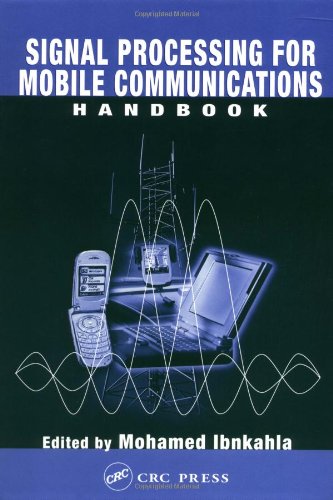
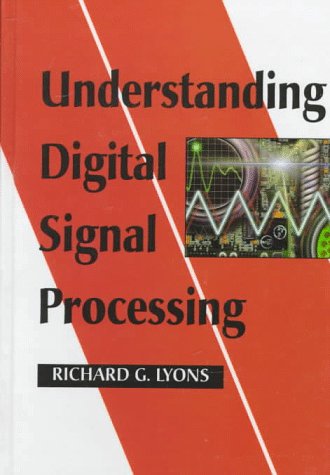
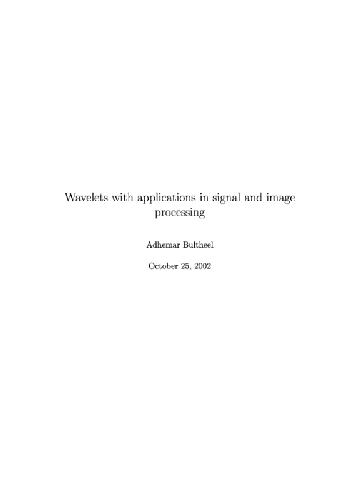
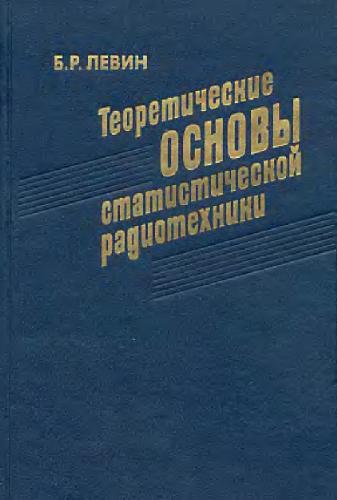
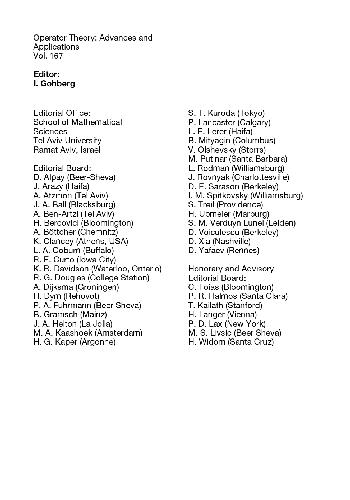
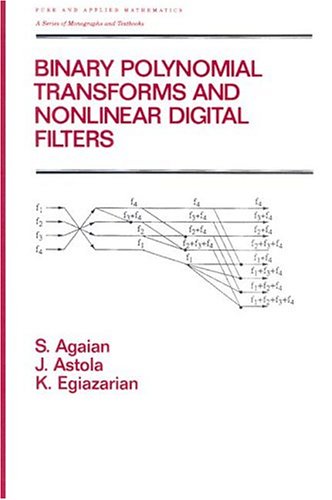

Reviews
There are no reviews yet.